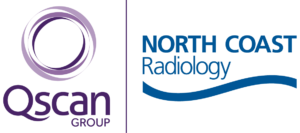Nuclear Medicine
Nuclear Medicine is the branch of radiology that uses radioactive materials to determine if certain organs such as the heart, kidneys, liver, thyroid, brain and lungs are functioning properly. It is also used to examine the bones for cancer, infection or trauma.
Nuclear medicine uses very small amounts of low-level radioactive chemicals, called radiopharmaceuticals, which are introduced into the body either intravenously or orally. Radiopharmaceuticals are specially formulated to be collected temporarily in the specific part of the body to be studied.
Nuclear medicine imaging procedures often identify abnormalities very early in the progression of a disease, sometimes long before problems are apparent with other diagnostic tests
Spect CT
Single-photon emission computed tomography (SPECT CT) is a non-invasive nuclear medicine test that enables doctors to evaluate disease based on functional and metabolic information. SPECT CT uses a gamma camera just like conventional nuclear medicine (2D images), but creates cross-sectional slices that can be reconstructed into 3D information.
The gamma camera is rotated around the patient through a full 360° while projections are acquired typically every 3–6°.
SPECT CT uses the x-ray attenuation information from computed tomography to correct for SPECT attenuation, which is important for accurate 3D signal measurement.
In addition, SPECT CT provides more anatomical images that precisely localise disease, which improves sensitivity and specificity. SPECT CT has proven to be valuable in oncology for identifying metastatic cancer.
The combined image SPECT CT enables the radiologist who analyses the scan to pinpoint the site of any abnormality more accurately. In complex bony areas such as the spine or feet, determining exactly which bone is affected on 2D nuclear medicine scans is challenging. Combining SPECT and CT provides essential anatomical mapping to allow precise localisation in 3D.
Nuclear Medicine involves a variety of examinations each with their own preparation requirements. When you book your appointment you will be advised of the specific preparation for your examination.
However, as a general informational resource, please find below a summary of key preparations. Since your preparation may be different from these shown here, it is important you contact us and document the specific preparations relevant to your examination or combination of examinations.
Unless stated or advised otherwise, please continue to take your usual medications on the day of the procedure.
Please note specific preparation for your examination will be advised at the time of booking/finalising your appointment.
- Bone Scan – No preparation
- Biliary Scan – Fast 4-6hrs. May be given morphine, or CCK, to assess GB Function
- Brain ECD PECT – No preparation
- Lung Ventilation/Perfusion – No preparation
- Gallium Scan – No preparation
- Gated Heart Pool Scan – No preparation
- Gastric Emptying Scan – Fast from midnight. Advise if Diabetic or on drug treatment for gastroparesis
- GI Bleed Scan – No preparation
- Liver-Spleen Scan – No preparation
- Liver Haemangioma – No preparation
- Liver Haemangioma – No preparation
- MCU – No preparation
- Myocardial Perfusion Scan – Fast after midnight. No caffeinated drinks for 24hrs prior to your appointment. Bring exercise clothes and shoes. Notify if diabetic. Note Specific preparation here
- Meckel’s Scan – Fast 6hrs
- Parathyroid Scan – No preparation
- Renal Scan – Hydrate well with 1 – 2 ltrs of fluid before scan. No diuretics on day of scan.
- Renal Captopril Scan – Hydrate well with 1 – 2 ltrs of fluid before scan. No diuretics on day of scan. Stop ACE inhibitors (captopril, Renitec, etc) for 3 days before study if possible.
- Renal DMSA Scan – No preparation
Thyroid Scan – No iodine x-ray contrast, amiodarone, iodine or kelp for 3 weeks. Stop thyroxine for 6 weeks and T3 for 2 weeks. Stop antithyroid drugs for 3-5days.
Normally, you will not be required to undress for your Nuclear medicine scan but you may be asked to remove metallic items from your pockets and clothing.
There should be little or no discomfort involved in the test. Nuclear medicine procedures are safe, effective and painless.
How the test is performed depends on the type of scan your physician has ordered. In many cases there will be a delay between the time you are given the isotope and the time the scan is actually done, this is to give the isotope time to flow through the body and concentrate in the organ that is being examined.
In some cases, a series of scans will be taken with a delay of an hour or two between them. In most studies the patient lies comfortably on a table. The camera is positioned over the body and is moved or rotated around the patient depending on the test. The camera detects the radioactive substance and highlights and displays this information on a computer screen.
The results are interpreted by a radiologist with special qualifications in Nuclear Medicine. Some Nuclear Medicine tests are very complex and it may take time for the information to be analyzed and reported. The results of these tests will usually be sent directly to your referring doctor and may take two or three days.
Most Nuclear Medicine examinations can be requested by General Practitioners and/or Specialists. However, any medicare eligibility issues should be addressed when you contact us for an appointment, or your referring practitioner will be able to advise you.
Patient Information Nuclear Medicine
Patient Information Myocardial Perfusion Scan
Radioiodine Therapy (link to come)
Gastric Emptying Scan (Link to come)
Nuclear Medicine is the branch of radiology that uses radioactive materials to determine if certain organs such as the heart, kidneys, liver, thyroid, brain and lungs are functioning properly. It is also used to examine the bones for cancer, infection or trauma.
Nuclear medicine uses very small amounts of low-level radioactive chemicals, called radiopharmaceuticals, which are introduced into the body either intravenously or orally. Radiopharmaceuticals are specially formulated to be collected temporarily in the specific part of the body to be studied.
Nuclear medicine imaging procedures often identify abnormalities very early in the progression of a disease, sometimes long before problems are apparent with other diagnostic tests
Spect CT
Single-photon emission computed tomography (SPECT CT) is a non-invasive nuclear medicine test that enables doctors to evaluate disease based on functional and metabolic information. SPECT CT uses a gamma camera just like conventional nuclear medicine (2D images), but creates cross-sectional slices that can be reconstructed into 3D information.
The gamma camera is rotated around the patient through a full 360° while projections are acquired typically every 3–6°.
SPECT CT uses the x-ray attenuation information from computed tomography to correct for SPECT attenuation, which is important for accurate 3D signal measurement.
In addition, SPECT CT provides more anatomical images that precisely localise disease, which improves sensitivity and specificity. SPECT CT has proven to be valuable in oncology for identifying metastatic cancer.
The combined image SPECT CT enables the radiologist who analyses the scan to pinpoint the site of any abnormality more accurately. In complex bony areas such as the spine or feet, determining exactly which bone is affected on 2D nuclear medicine scans is challenging. Combining SPECT and CT provides essential anatomical mapping to allow precise localisation in 3D.
Nuclear Medicine involves a variety of examinations each with their own preparation requirements. When you book your appointment you will be advised of the specific preparation for your examination.
However, as a general informational resource, please find below a summary of key preparations. Since your preparation may be different from these shown here, it is important you contact us and document the specific preparations relevant to your examination or combination of examinations.
Unless stated or advised otherwise, please continue to take your usual medications on the day of the procedure.
Please note specific preparation for your examination will be advised at the time of booking/finalising your appointment.
- Bone Scan – No preparation
- Biliary Scan – Fast 4-6hrs. May be given morphine, or CCK, to assess GB Function
- Brain ECD PECT – No preparation
- Lung Ventilation/Perfusion – No preparation
- Gallium Scan – No preparation
- Gated Heart Pool Scan – No preparation
- Gastric Emptying Scan – Fast from midnight. Advise if Diabetic or on drug treatment for gastroparesis
- GI Bleed Scan – No preparation
- Liver-Spleen Scan – No preparation
- Liver Haemangioma – No preparation
- Liver Haemangioma – No preparation
- MCU – No preparation
- Myocardial Perfusion Scan – Fast after midnight. No caffeinated drinks for 24hrs prior to your appointment. Bring exercise clothes and shoes. Notify if diabetic. Note Specific preparation here
- Meckel’s Scan – Fast 6hrs
- Parathyroid Scan – No preparation
- Renal Scan – Hydrate well with 1 – 2 ltrs of fluid before scan. No diuretics on day of scan.
- Renal Captopril Scan – Hydrate well with 1 – 2 ltrs of fluid before scan. No diuretics on day of scan. Stop ACE inhibitors (captopril, Renitec, etc) for 3 days before study if possible.
- Renal DMSA Scan – No preparation
Thyroid Scan – No iodine x-ray contrast, amiodarone, iodine or kelp for 3 weeks. Stop thyroxine for 6 weeks and T3 for 2 weeks. Stop antithyroid drugs for 3-5days.
Normally, you will not be required to undress for your Nuclear medicine scan but you may be asked to remove metallic items from your pockets and clothing.
There should be little or no discomfort involved in the test. Nuclear medicine procedures are safe, effective and painless.
How the test is performed depends on the type of scan your physician has ordered. In many cases there will be a delay between the time you are given the isotope and the time the scan is actually done, this is to give the isotope time to flow through the body and concentrate in the organ that is being examined.
In some cases, a series of scans will be taken with a delay of an hour or two between them. In most studies the patient lies comfortably on a table. The camera is positioned over the body and is moved or rotated around the patient depending on the test. The camera detects the radioactive substance and highlights and displays this information on a computer screen.
The results are interpreted by a radiologist with special qualifications in Nuclear Medicine. Some Nuclear Medicine tests are very complex and it may take time for the information to be analyzed and reported. The results of these tests will usually be sent directly to your referring doctor and may take two or three days.
Most Nuclear Medicine examinations can be requested by General Practitioners and/or Specialists. However, any medicare eligibility issues should be addressed when you contact us for an appointment, or your referring practitioner will be able to advise you.
Patient Information Nuclear Medicine
Patient Information Myocardial Perfusion Scan
Radioiodine Therapy (link to come)
Gastric Emptying Scan (Link to come)





